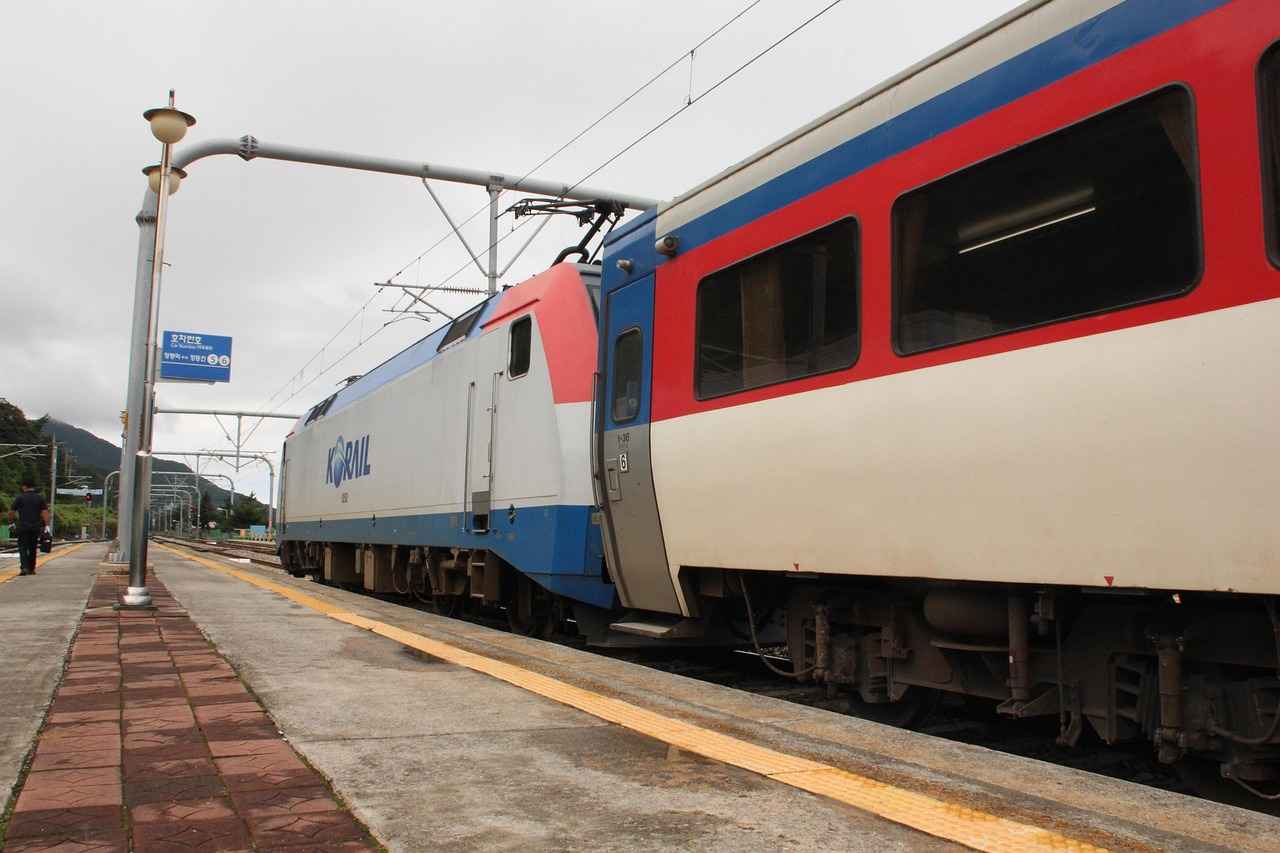The West Bengal Board of Secondary Education (WBBSE) plays a pivotal role in shaping the educational landscape of West Bengal. Established in 1951, the board has undergone significant transformations that have impacted secondary education in the region. This article delves into the origins, development, and impact of the WBBSE, highlighting key milestones and contributions throughout its history.
Origins of the West Bengal Board
The inception of the WBBSE was a response to the need for a structured educational framework in West Bengal. At the time, the educational system was fragmented, lacking uniformity and quality. The board was formed with the objective of providing a standardized curriculum and assessment methods, ensuring that students across the state received a consistent quality of education.
Key Milestones in Development
- Formation and Initial Challenges: The early years of the WBBSE were fraught with challenges, including the need to establish credibility and develop a comprehensive curriculum.
- Legislative Framework: The establishment of the board was backed by legislative measures that provided the necessary legal support for its operations.
- Early Curriculum Initiatives: In its formative years, the board introduced various curricula aimed at addressing the educational needs of diverse student populations.
Impact on Secondary Education
The influence of the WBBSE on secondary education in West Bengal has been profound. It has standardized education, ensuring that students receive quality instruction regardless of their location. The board has also implemented various assessment methods to effectively evaluate student learning, contributing to improved educational outcomes.
Challenges Faced by the Board
- Technological Adaptation: The rise of digital technology presents both challenges and opportunities for the WBBSE in modernizing its educational practices.
- Policy Reforms and Updates: Continuous evolution of educational policies necessitates that the board remains agile and responsive to changing needs.
Future Prospects of the WBBSE
Looking ahead, the WBBSE is focused on enhancing its educational impact through innovative practices and collaborations with other educational organizations. This forward-thinking approach aims to improve student engagement and learning outcomes, ensuring that the board remains a cornerstone of secondary education in West Bengal.
In conclusion, the West Bengal Board of Secondary Education has made significant strides since its inception, overcoming challenges and adapting to the evolving educational landscape. Its commitment to quality education continues to shape the futures of countless students across the state.

Origins of the West Bengal Board
The West Bengal Board of Secondary Education (WBBSE) was established in 1951 with the primary aim of regulating and developing secondary education in the state of West Bengal, India. This initiative marked a significant turning point in the educational landscape of the region, reflecting the need for a structured educational framework in post-independence India.
At the time of its inception, West Bengal was undergoing considerable social and economic changes. The educational system was fragmented, with various institutions operating independently, often lacking uniformity in curriculum and assessment standards. The formation of WBBSE aimed to address these challenges by establishing a cohesive and standardized educational framework.
The board’s foundational goals included:
- Ensuring quality education across all secondary schools in West Bengal.
- Implementing a standardized curriculum that caters to the diverse needs of students.
- Establishing fair assessment and evaluation methods to gauge student performance accurately.
In its early years, the WBBSE faced numerous challenges, including resistance from some educational institutions and the need for widespread awareness about its objectives. However, the board’s commitment to improving educational standards gradually gained acceptance among educators and parents alike.
Moreover, the educational landscape of West Bengal during the early 1950s was characterized by a strong emphasis on traditional subjects, with a limited focus on vocational training or modern educational methodologies. The WBBSE recognized the importance of adapting to changing societal needs, paving the way for future reforms in curriculum and pedagogy.
Overall, the establishment of the West Bengal Board of Secondary Education was a crucial step towards enhancing the quality and accessibility of secondary education in the state, laying the groundwork for future developments that would benefit generations of students.

Key Milestones in Development
The West Bengal Board of Secondary Education (WBBSE) has played a pivotal role in shaping the educational landscape of West Bengal since its inception. Understanding the key milestones in the development of the WBBSE is essential to appreciate its impact on secondary education in the region.
Established in 1951, the WBBSE was created to standardize and regulate secondary education in West Bengal. Its formation marked a significant shift in the educational framework, responding to the needs of a post-independence society eager for structured learning. The early years were characterized by challenges, including the need for a comprehensive curriculum and infrastructure development.
- Legislative Support: The establishment of the board was backed by legislative measures that provided a legal framework for its operations. This included the West Bengal Secondary Education Act, which laid the groundwork for governance and accountability.
- Curriculum Development: In its formative years, the WBBSE introduced various curricula aimed at enhancing educational standards. The focus was on creating a balanced approach that included both academic and vocational training.
- Expansion of Reach: As the board evolved, it expanded its jurisdiction, incorporating more schools and diversifying its offerings to cater to a broader demographic. This expansion was crucial in promoting access to quality education across urban and rural areas.
- Assessment Innovations: The board has continually refined its assessment methods. The introduction of standardized tests helped ensure that student performance could be reliably measured, promoting accountability among educational institutions.
These milestones not only reflect the board’s commitment to improving educational standards but also highlight its adaptability in the face of changing societal needs. As the WBBSE continues to evolve, it remains focused on enhancing the quality of secondary education, ensuring that it meets the demands of a dynamic world.
In conclusion, the journey of the WBBSE is marked by significant milestones that underscore its role in shaping education in West Bengal. From its legislative foundations to its innovative approaches in curriculum and assessment, the board’s history is a testament to its ongoing commitment to educational excellence.
Formation and Initial Challenges
The formation of the West Bengal Board of Secondary Education (WBBSE) in 1951 marked a pivotal moment in the educational landscape of West Bengal. However, the early years were fraught with numerous challenges that needed to be addressed to ensure the board’s successful establishment and operation.
One of the primary obstacles was the lack of infrastructure for secondary education in the region. Many schools were under-resourced, lacking essential facilities and qualified teachers. To tackle this, the WBBSE initiated programs aimed at improving school infrastructure through government funding and partnerships with local organizations. This effort was crucial in laying the groundwork for a more robust educational framework.
Another significant challenge was the development of a standardized curriculum. In the absence of a cohesive educational policy, schools followed varying syllabi, leading to inconsistencies in student learning outcomes. The board undertook the task of formulating a comprehensive curriculum that would cater to the diverse needs of students across West Bengal. This involved extensive consultations with educational experts and stakeholders to ensure that the curriculum was both relevant and inclusive.
Moreover, the board faced administrative hurdles during its inception. Establishing clear governance structures and operational guidelines was essential for effective functioning. The WBBSE worked diligently to create a transparent administrative framework, which included defining roles and responsibilities within the board and establishing communication channels with schools.
In conclusion, while the early years of the WBBSE were marked by significant challenges, the board’s proactive approach in addressing these issues laid a strong foundation for the future of secondary education in West Bengal. Through strategic initiatives aimed at improving infrastructure, standardizing curricula, and streamlining administration, the WBBSE has significantly influenced the educational landscape, ensuring better outcomes for students across the state.
Legislative Framework
The establishment of the West Bengal Board of Secondary Education (WBBSE) was a pivotal moment in the educational landscape of West Bengal, and it was significantly supported by a robust . This framework comprised various laws and regulations that not only facilitated the board’s creation but also ensured its effective operation and governance.
Initially, the West Bengal Board of Secondary Education Act was enacted in 1951, laying the foundational legal groundwork for the board. This act aimed to regulate and supervise secondary education in the state, providing a structured approach to educational standards. It emphasized the importance of creating a board that would cater to the diverse educational needs of the region.
Furthermore, several amendments and supplementary regulations were introduced over the years to adapt to the changing educational landscape. These legislative measures have been crucial in addressing the evolving demands of students and schools, ensuring that the board remains relevant and effective. The Right to Education Act of 2009 further reinforced the board’s commitment to making education accessible to all children, thereby enhancing its operational scope.
The legislative framework also encompasses provisions for the establishment of affiliated schools, curriculum development, and examination processes. By defining clear guidelines for these aspects, the laws have helped maintain a high standard of education across the state. The board’s ability to implement policies effectively is largely attributed to this comprehensive legal structure.
In summary, the legislative measures supporting the WBBSE have been instrumental in shaping its identity and functionality. These laws not only facilitated the board’s establishment but also provided the necessary tools to navigate challenges and implement reforms, ensuring a progressive educational environment in West Bengal.
Early Curriculum Initiatives
In the formative years of the West Bengal Board of Secondary Education (WBBSE), the introduction of various educational curricula was crucial in addressing the diverse needs of students. The board recognized that a one-size-fits-all approach would not be effective, leading to the development of multiple programs tailored to different learning styles and regional requirements.
The initial curricula focused on core subjects such as Mathematics, Science, and Languages. These foundational subjects were designed to equip students with essential skills and knowledge, preparing them for further education and vocational opportunities. Additionally, the board introduced vocational courses aimed at providing practical skills to students, enabling them to pursue careers immediately after secondary education.
To ensure that the educational programs were relevant and effective, the WBBSE conducted extensive consultations with educators, parents, and community leaders. This collaborative approach helped in understanding the local context and the specific challenges faced by students in various regions of West Bengal. As a result, the curricula were not only academically rigorous but also culturally relevant, fostering a sense of identity and belonging among students.
Moreover, the board placed a strong emphasis on inclusive education. Special initiatives were launched to support students with disabilities and those from marginalized backgrounds. These programs aimed to create an equitable learning environment where every student had access to quality education.
As educational needs continued to evolve, the WBBSE remained committed to revising and updating its curricula. This adaptability ensured that the board could respond to changes in society, technology, and the job market, thereby maintaining the relevance of its educational offerings.
In conclusion, the early curriculum initiatives of the WBBSE played a pivotal role in shaping the educational landscape of West Bengal. By focusing on inclusivity, practical skills, and cultural relevance, the board laid a strong foundation for future educational advancements.
Expansion and Growth
As the West Bengal Board of Secondary Education (WBBSE) evolved, its influence on the educational landscape of West Bengal significantly expanded. This growth can be attributed to several key factors, which include the increasing demand for secondary education, the board’s proactive initiatives, and its commitment to enhancing educational standards.
Initially, the board faced challenges in establishing a robust secondary education system. However, as the population grew and the need for a skilled workforce became apparent, the importance of secondary education was recognized. The WBBSE took on the responsibility of not only regulating education but also ensuring that it was accessible to all students across the state.
One of the primary roles of the WBBSE has been to develop a comprehensive curriculum that caters to diverse student needs. By introducing various educational programs, the board has facilitated the growth of secondary education in rural and urban areas alike. This inclusivity has been crucial in bridging educational gaps and providing equal opportunities for all learners.
Moreover, the board has implemented numerous initiatives aimed at improving the quality of education. These include teacher training programs, infrastructure development in schools, and the introduction of modern teaching methodologies. The focus on continuous professional development for educators has played a significant role in raising educational standards, thereby enhancing student outcomes.
In addition, the WBBSE has embraced technology as a means to further expand its reach. The introduction of digital learning platforms has allowed students to access educational resources beyond traditional classroom settings. This shift not only caters to the tech-savvy generation but also ensures that education remains relevant in an increasingly digital world.
Overall, the expansion of secondary education in West Bengal, facilitated by the WBBSE, has had a profound impact on society. By fostering an environment of learning and growth, the board has contributed significantly to the development of a knowledgeable and skilled populace, thus preparing students for future challenges.

Impact on Secondary Education
The West Bengal Board of Secondary Education (WBBSE) has played a pivotal role in shaping the landscape of secondary education in West Bengal. Established in 1951, the board has continually aimed to enhance educational standards and improve student performance across the region. This section evaluates the significant contributions made by the WBBSE to secondary education, focusing on key areas such as standardization, curriculum development, and assessment methods.
One of the board’s most crucial contributions is the standardization of education. By implementing uniform curricula and examination patterns, the WBBSE ensures that students receive a consistent quality of education, regardless of their school’s location or resources. This standardization has been instrumental in leveling the educational playing field, enabling students from diverse backgrounds to access the same quality of learning opportunities.
Moreover, the WBBSE has introduced innovative curriculum initiatives that align with contemporary educational needs. By incorporating modern subjects and teaching methodologies, the board has adapted its educational framework to prepare students for the challenges of the 21st century. This adaptability not only enhances student engagement but also equips learners with essential skills for higher education and the workforce.
Assessment and evaluation are other critical areas where the WBBSE has made a significant impact. The board has developed a variety of evaluation methods that accurately measure student learning and performance. From formative assessments to standardized tests, these methods provide valuable insights into student progress and areas needing improvement. By ensuring that assessment techniques are fair and comprehensive, the WBBSE fosters a culture of continuous learning and development.
In conclusion, the WBBSE’s contributions to secondary education in West Bengal are profound and far-reaching. Through its commitment to standardization, curriculum innovation, and effective assessment strategies, the board has not only uplifted educational standards but also significantly enhanced student performance. As it continues to evolve, the WBBSE remains a cornerstone of educational development in the region, dedicated to fostering a brighter future for all students.
Standardization of Education
The West Bengal Board of Secondary Education (WBBSE) plays a crucial role in the educational landscape of West Bengal, particularly through its commitment to the . This process is essential for ensuring that all students, regardless of their school or location, receive a consistent and quality education. In this section, we will explore the various strategies and initiatives the WBBSE has implemented to achieve this goal.
One of the primary methods employed by the WBBSE is the development of a uniform curriculum across all affiliated schools. This curriculum is designed to meet the educational needs of students while adhering to national educational standards. By providing a standardized syllabus, the board ensures that every student has access to the same foundational knowledge, which is critical for their academic success.
In addition to the curriculum, the WBBSE also focuses on teacher training and development. The board organizes regular workshops and training sessions for educators to keep them updated on the latest teaching methodologies and educational practices. This initiative not only enhances the teachers’ skills but also promotes a uniform teaching approach across different schools, thereby improving the overall quality of education.
Furthermore, the WBBSE has established assessment criteria that are uniformly applied across all schools. These criteria include standardized examinations that evaluate student performance objectively. By implementing a consistent evaluation system, the board can effectively measure student learning outcomes and ensure that all students are held to the same academic standards.
Through these initiatives, the WBBSE aims to create an equitable educational environment where every student has the opportunity to succeed. The board’s dedication to standardization not only enhances educational quality but also fosters a sense of unity among schools within the state.
In conclusion, the WBBSE’s efforts in standardizing education are vital for maintaining high educational standards across West Bengal. By focusing on uniform curricula, teacher training, and consistent assessment methods, the board is actively working towards a brighter future for all students in the region.
Assessment and Evaluation Methods
The West Bengal Board of Secondary Education (WBBSE) has established a robust framework for assessing and evaluating student learning. This framework is crucial for ensuring that educational standards are met and that students are adequately prepared for their future endeavors. Below, we explore the various assessment methods employed by the board to measure student performance effectively.
- Formative Assessments: These assessments are conducted during the learning process. They include quizzes, class participation, and ongoing projects, allowing teachers to gauge student understanding and provide timely feedback.
- Summative Assessments: At the end of instructional units, summative assessments such as final exams and standardized tests are administered. These evaluations help determine whether students have mastered the curriculum.
- Continuous Comprehensive Evaluation (CCE): This method focuses on assessing students’ overall development, including academic and co-curricular activities. It aims to provide a holistic view of student performance.
- Practical Examinations: For subjects like science and arts, practical exams are essential. They assess students’ hands-on skills and their ability to apply theoretical knowledge in real-world scenarios.
- Peer and Self-Assessment: Encouraging students to evaluate their work and that of their peers fosters critical thinking and self-reflection. This method promotes a deeper understanding of learning objectives.
Each of these methods plays a vital role in the educational process, ensuring that assessments are not only about grades but also about fostering a learning environment that encourages growth and improvement. The board continuously reviews and updates its assessment strategies to align with educational advancements and the needs of students.
In conclusion, the evaluation techniques implemented by the WBBSE are designed to measure not just academic achievement but also the overall development of students. By employing a variety of assessment methods, the board aims to create a comprehensive educational experience that prepares students for the challenges ahead.

Challenges Faced by the Board
The West Bengal Board of Secondary Education (WBBSE) has made significant strides in enhancing the quality of education in the state. However, it has also encountered a myriad of challenges that threaten its operations and overall effectiveness. This section delves into some of the most pressing issues faced by the board.
- Technological Adaptation: In an era where technology is rapidly transforming education, the WBBSE faces the challenge of integrating digital tools into its curriculum. The lack of adequate infrastructure in many schools hampers the effective implementation of e-learning initiatives. Moreover, training teachers to use these technologies effectively remains a significant hurdle.
- Policy Reforms and Updates: The educational landscape is constantly evolving, necessitating regular updates to policies and curricula. The WBBSE must navigate the complexities of implementing these reforms while ensuring that they meet the diverse needs of students across the state. Resistance to change from some educational institutions further complicates this process.
- Resource Allocation: Limited financial resources can significantly impact the board’s ability to maintain and enhance educational standards. Many schools struggle with inadequate facilities, insufficient teaching materials, and a lack of trained staff. The board must find innovative ways to allocate resources effectively to address these disparities.
- Quality Assurance: Ensuring consistent educational quality across all affiliated schools is a critical challenge. The board must establish robust evaluation mechanisms to monitor performance and address discrepancies in teaching and learning outcomes. This requires ongoing support and professional development for educators.
- Student Engagement: With changing societal dynamics, engaging students in the learning process is becoming increasingly difficult. The WBBSE must explore new pedagogical strategies that resonate with today’s learners, fostering a more interactive and participatory classroom environment.
In conclusion, while the WBBSE has made commendable progress in shaping secondary education in West Bengal, it must address these challenges proactively. By embracing technological advancements, reforming policies, and ensuring equitable resource distribution, the board can enhance its educational effectiveness and continue to serve the needs of its students.
Technological Adaptation
has become a pivotal aspect of education, particularly for boards like the West Bengal Board of Secondary Education (WBBSE). In an era where digital tools are reshaping learning environments, the board faces both challenges and opportunities.
The rapid advancement of technology demands that educational institutions evolve. One of the primary challenges is infrastructure development. Many schools in West Bengal lack the necessary digital infrastructure, making it difficult to implement modern teaching methods. However, this challenge also presents an opportunity for the board to advocate for investment in technology and ensure equitable access to resources.
Additionally, the integration of digital learning platforms can enhance student engagement. Online resources, interactive tools, and educational apps allow for personalized learning experiences. The WBBSE can leverage these technologies to create a more dynamic curriculum that caters to diverse learning styles.
Moreover, the shift towards remote learning during the pandemic highlighted the importance of adaptability. The board must develop comprehensive training programs for teachers to effectively use digital tools in their classrooms. This includes not only technical skills but also pedagogical strategies to engage students in a virtual environment.
Another significant aspect of technological adaptation is data management. The board can utilize technology to streamline administrative processes, from student enrollment to examination management. Implementing robust data systems can improve efficiency and provide valuable insights into student performance.
In conclusion, while the challenges of technological adaptation are substantial, they also offer the WBBSE a chance to innovate and improve educational outcomes. By embracing technology, the board can enhance the learning experience for students and prepare them for a digital future.
Policy Reforms and Updates
In the realm of education, policy reforms play a pivotal role in shaping the landscape for both educators and students. The West Bengal Board of Secondary Education (WBBSE) has been at the forefront of implementing significant changes that reflect the evolving needs of society. This section explores the recent reforms and their implications for the board and schools.
One of the most notable reforms has been the introduction of a competency-based curriculum. This approach emphasizes critical thinking and problem-solving skills over rote memorization, aiming to prepare students for real-world challenges. The shift to a competency-based system not only aligns with global educational trends but also enhances student engagement and learning outcomes.
Additionally, the board has focused on incorporating technology in education. With the rise of digital learning platforms, WBBSE has initiated training programs for teachers to effectively integrate technology into their classrooms. This initiative not only updates teaching methodologies but also makes learning more accessible and interactive for students.
Another significant reform is the emphasis on inclusive education. The WBBSE has made strides in ensuring that students with disabilities receive the necessary support and resources. By implementing policies that promote inclusivity, the board aims to create a more equitable educational environment for all learners.
Furthermore, the board has revised its assessment methods to better reflect student learning and development. Moving away from traditional examination formats, WBBSE is now exploring continuous assessment techniques that provide a more comprehensive view of student progress throughout the academic year.
In conclusion, the recent policy reforms by the WBBSE are a testament to its commitment to improving educational standards and adapting to contemporary challenges. By focusing on competency-based learning, technology integration, inclusivity, and innovative assessment methods, the board is paving the way for a brighter future in education.

Future Prospects of the WBBSE
As we look towards the future, the West Bengal Board of Secondary Education (WBBSE) is committed to enhancing its educational impact. This section explores various potential developments and initiatives that may shape its direction in the coming years.
- Innovative Educational Practices: The board is actively exploring new teaching methodologies that focus on student engagement and learning outcomes. By incorporating technology and interactive learning, WBBSE aims to create a more dynamic educational environment.
- Collaboration with Other Educational Bodies: Strengthening partnerships with other educational organizations can lead to a more cohesive educational framework. Collaborations may include joint programs, resource sharing, and teacher training initiatives that benefit both students and educators.
- Emphasis on Digital Learning: With the rise of digital platforms, the WBBSE is looking to enhance its online resources. This includes the development of e-learning modules and virtual classrooms, making education more accessible to students across the state.
- Focus on Skill Development: To align with the modern job market, the board plans to integrate skill development programs into the curriculum. This initiative aims to equip students with practical skills that enhance employability after graduation.
- Regular Policy Revisions: To remain relevant, the WBBSE is committed to updating its policies regularly. This includes adapting to new educational trends and responding to feedback from educators and students.
In conclusion, the future of the WBBSE is poised for significant growth and transformation. By embracing innovative practices, fostering collaborations, and focusing on skill development, the board aims to enhance the quality of education in West Bengal. These initiatives not only promise to improve student outcomes but also ensure that the educational framework remains robust and responsive to the needs of the future.
Innovative Educational Practices
The West Bengal Board of Secondary Education (WBBSE) is actively investigating and adopting innovative teaching methodologies to enhance student engagement and learning outcomes. As educational landscapes evolve, it becomes imperative for educational institutions to adapt and incorporate new strategies that resonate with the needs of contemporary learners.
One of the primary focuses of these innovative practices is to create a student-centered learning environment. This approach encourages active participation, where students are not just passive recipients of information but are engaged in the learning process. Techniques such as project-based learning and collaborative group work foster critical thinking and problem-solving skills, essential for the 21st century.
Furthermore, the integration of technology in the classroom has proven to be a game-changer. Utilizing tools such as interactive whiteboards, educational apps, and online resources can significantly enhance the learning experience. For instance, virtual simulations and gamified learning platforms can make complex subjects more accessible and engaging for students.
Another innovative practice being explored is the flipped classroom model. In this model, traditional teaching methods are reversed; students learn new content at home through videos and online resources and then engage in hands-on activities in the classroom. This method not only maximizes classroom time but also allows for personalized learning experiences.
Moreover, incorporating social-emotional learning (SEL) into the curriculum is gaining traction. This approach focuses on developing students’ emotional intelligence, resilience, and interpersonal skills, which are crucial for their overall development and success in life.
In conclusion, the WBBSE’s exploration of these signifies a commitment to improving educational outcomes. By embracing new methodologies, the board aims to create a more engaging and effective learning environment that prepares students for future challenges.
Collaboration with Other Educational Bodies
In today’s rapidly evolving educational landscape, collaboration has become a vital strategy for enhancing the effectiveness and reach of educational systems. By forming partnerships with other educational organizations, institutions can leverage shared resources, expertise, and innovative practices to create a more robust learning environment.
One of the primary benefits of such collaborative efforts is the ability to share best practices. Educational organizations can learn from each other’s successes and challenges, leading to improved teaching methodologies and curriculum development. For instance, partnerships with universities can provide secondary education boards like the West Bengal Board of Secondary Education (WBBSE) access to cutting-edge research and pedagogical strategies that can enrich their programs.
Moreover, collaborative initiatives can enhance professional development for educators. By working together, organizations can offer workshops, training sessions, and resources that help teachers improve their skills and adapt to new educational technologies. This not only benefits the educators but also translates into better learning experiences for students.
Another significant aspect of collaboration is the potential for joint funding opportunities. By pooling resources, educational bodies can apply for grants and funding that may not be available to them individually. This financial support can be crucial for implementing new programs, upgrading facilities, or investing in technology.
Furthermore, partnerships can foster a sense of community and shared purpose among different educational institutions. When schools, colleges, and universities collaborate, they create a network of support that can help address common challenges, such as student engagement and retention.
In conclusion, the potential for mutual benefit through collaboration is immense. By working together, educational organizations can strengthen their systems, improve educational outcomes, and ultimately provide a better learning experience for students. As the educational landscape continues to change, embracing collaboration will be key to navigating future challenges and opportunities.
Frequently Asked Questions
- What is the primary purpose of the West Bengal Board of Secondary Education?
The West Bengal Board of Secondary Education (WBBSE) aims to regulate and supervise secondary education in the state, ensuring that students receive quality education and standardized curricula.
- When was the WBBSE established?
The WBBSE was established in 1951, marking a significant step towards organizing and improving secondary education in West Bengal.
- What challenges did the WBBSE face during its early years?
In its formative years, the WBBSE encountered various challenges, including limited resources, resistance to change, and the need to develop a comprehensive curriculum that catered to diverse student needs.
- How has the WBBSE contributed to the standardization of education?
The WBBSE has played a crucial role in standardizing education by implementing consistent curricula and assessment methods across schools, thus ensuring that all students have equal opportunities to succeed.
- What are some future initiatives the WBBSE is considering?
Looking ahead, the WBBSE is exploring innovative educational practices and potential collaborations with other educational bodies to enhance learning outcomes and adapt to the evolving educational landscape.


























































